How to handle aggressive animals in the clinic. Any animal has the potential to be aggressive, especially in the veterinary clinic. Many times this aggression stems from fear and anxiety.
For some pets, the act of getting to the clinic is stressful enough without the added features of other pets and people along with pheromones from other equally stressed animals.
There are a few things that can be done to prevent such behavior or to minimize the impact of such behavior. Knowing the potential and being able to read the signs of fear and anxiety can help make the pet’s visit easier and minimize the risk to the staff.
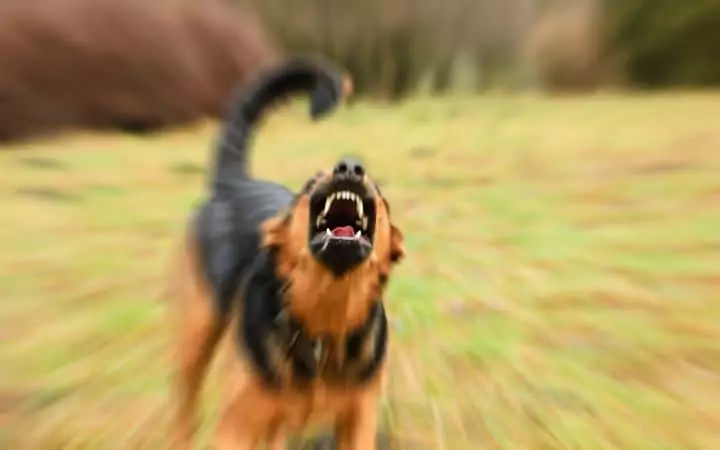
Safe Animal Handling
There are many components to handling animals safely and all staff should be versed in this area, including front desk and management. One of the first components of safe animal handling is being able to read an animal’s state of mind.
Know how to spot animals that are fearful or anxious about the situation. Secondly, approach the animal in a non-threatening manner – never head-on or from the rear.
Never put your face right up to an animal’s face as this can be interpreted as a threat and get you bitten. Speak softly and make slow deliberate movements to help soothe the pet’s anxiety.
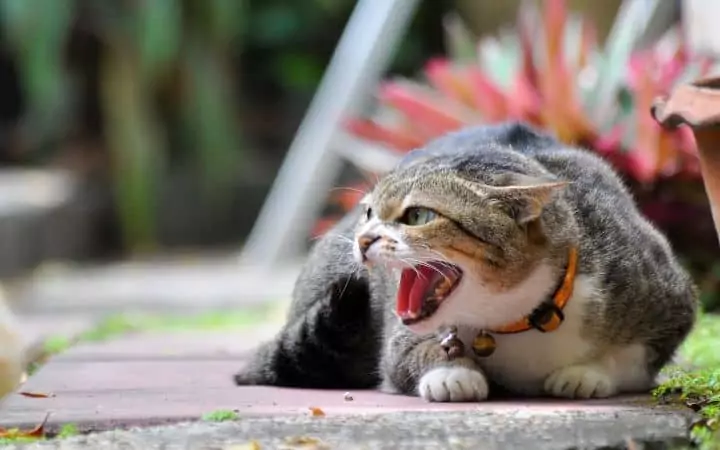
Loud, harsh commands or sudden movements can further an already fearful pet’s anxiety. It often helps to get down on their level so as to appear less threatening. Be careful not to get yourself in a position that hinders a quick escape should the pet decide to lunge.
Some animals are less aggressive when their owners are present and vice versa. It is a good idea to note these things when they are discovered. Also, make a note if a pet responds better to less restraint than more.
Some animals become more fearful and panic when they feel too restrained.
In addition to noting a pet’s behavior specifics in his file, ask the owners at the start of the visit if they know what seems to work better (or worse) for their pet in terms of restraint and handling.
Some pets become more anxious in a busy waiting room environment and may benefit from being taken straight into an exam room to wait for their appointment.
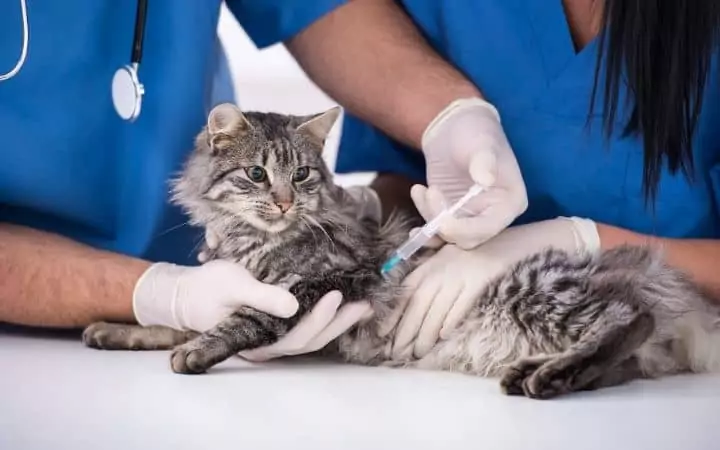
With some animals, the stimulation of noise and smells can be too much and cause them to become more aggressive even toward their owners.
Animals that are staying in the clinic should have an appropriate label on their kennel to warn staff of their aggressive tendencies. Choice of a kennel is also important for aggressive animals.
Small dogs are more easily handled from bottom cages. Cats should be in shallower cages that are easily accessible at waist or chest height.
It is a good idea to have these animals in a room with a door that can be closed off to prevent escape should the animal get loose.
Methods of Restraining Pets at the Veterinary Clinic
The most commonly used method of restraint is physically holding the animal. There are several ways to hold an animal-based on the procedure being performed and the size of the animal.
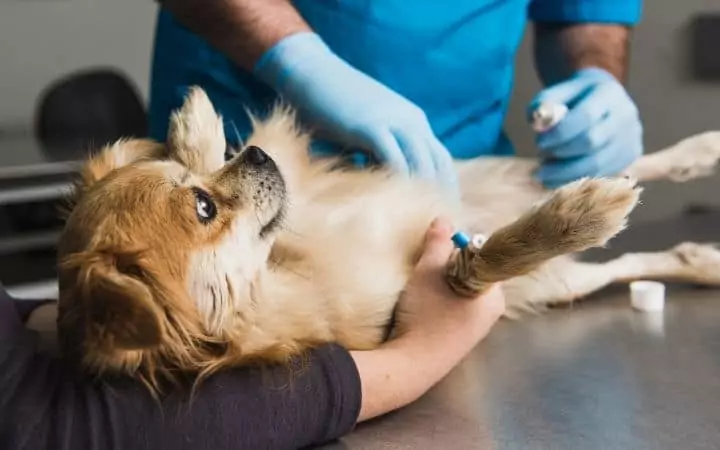
Everyone that handles animals in the clinic should be trained on all proper animal restraint techniques. All pets should have a slip lead/harness on during restraint to help prevent them from getting loose and causing harm to themselves.
In addition to holding an animal for restraint, there are several tools that can be used to assist the holder. Muzzles are a common tool to help prevent a dog (or cat) from biting the people working with the pet.
Care should be taken to ensure the muzzle is the right size for the pet – too small and it will cause pain and discomfort, too large and the pet will still be able to bite and cause injury.
Towels and cat bags are also good tools to have on hand. Towels can be used to cover a small cat’s or dog’s eyes or limbs to reduce stimuli and prevent them from lashing out with claws to injure the handlers.

Cat bags work on much the same principle, keeping the cat fully restrained while allowing access for blood draws or limited exam areas.
Nets and catch poles can also be used in the event that an animal is so aggressive it can’t be touched without the risk of serious harm to the handler.
Care should be taken with these methods of restraint as an animal can panic and cause harm to himself with these devices. Finally, for the extremely aggressive/fearful animals that cannot be handled, sedation and general anesthesia are options.
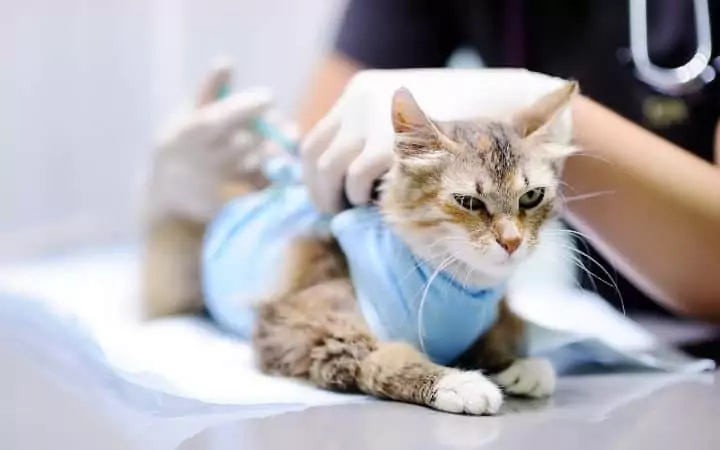
While these methods are not without risk, they are less risky than allowing an animal to become so stressed it does harm to himself and others.
Conclusion
Making the veterinary clinic a less threatening place is key to safe animal handling. While options may be limited to the clinic design itself, the behavior of staff can go a long way toward minimizing a pet’s distress.
Patience and calm will help make the vet visit a less traumatic experience, paving the way for even better experiences with successive visits. All veterinary staff should be trained on how to approach and handle an anxious pet.
Do not be afraid to ask for help when confronting a fearful or aggressive animal. Proper pet handling is important both for the safety of the staff, the owners, and that of the pet.
DISCLAIMER: This article was originally posted on June 23rd, 2017.
